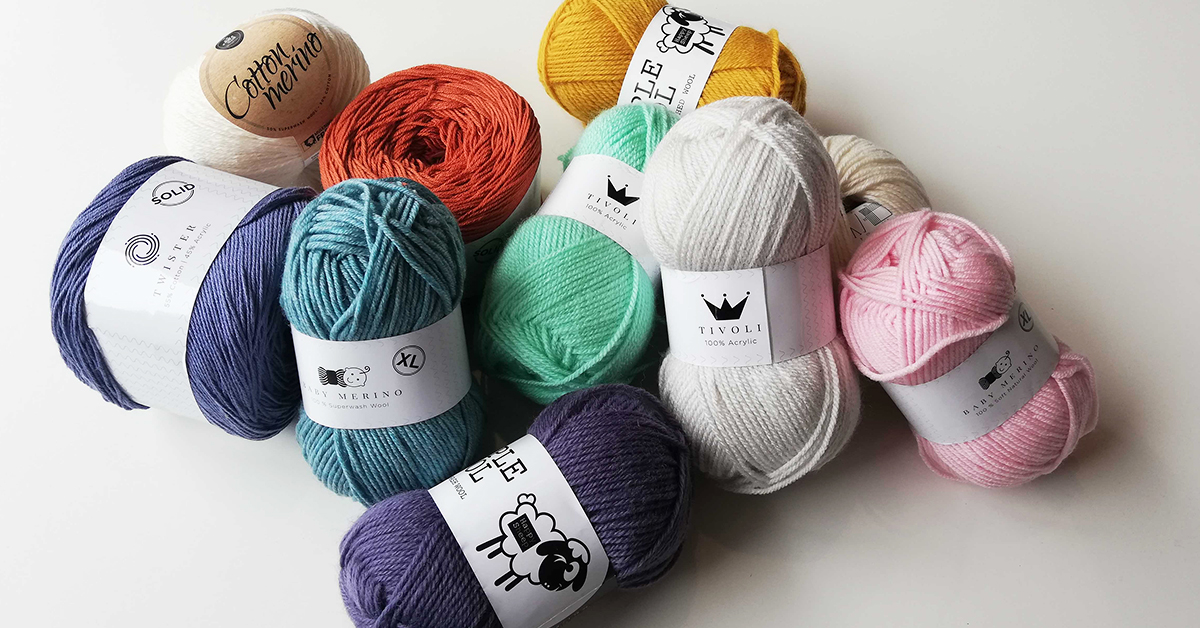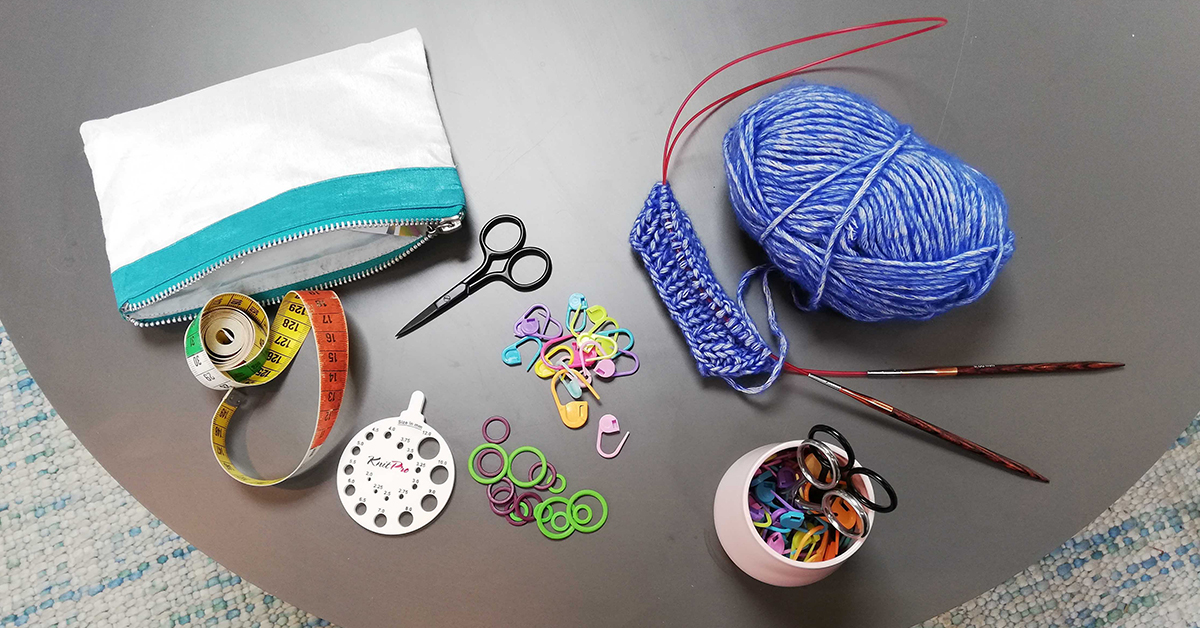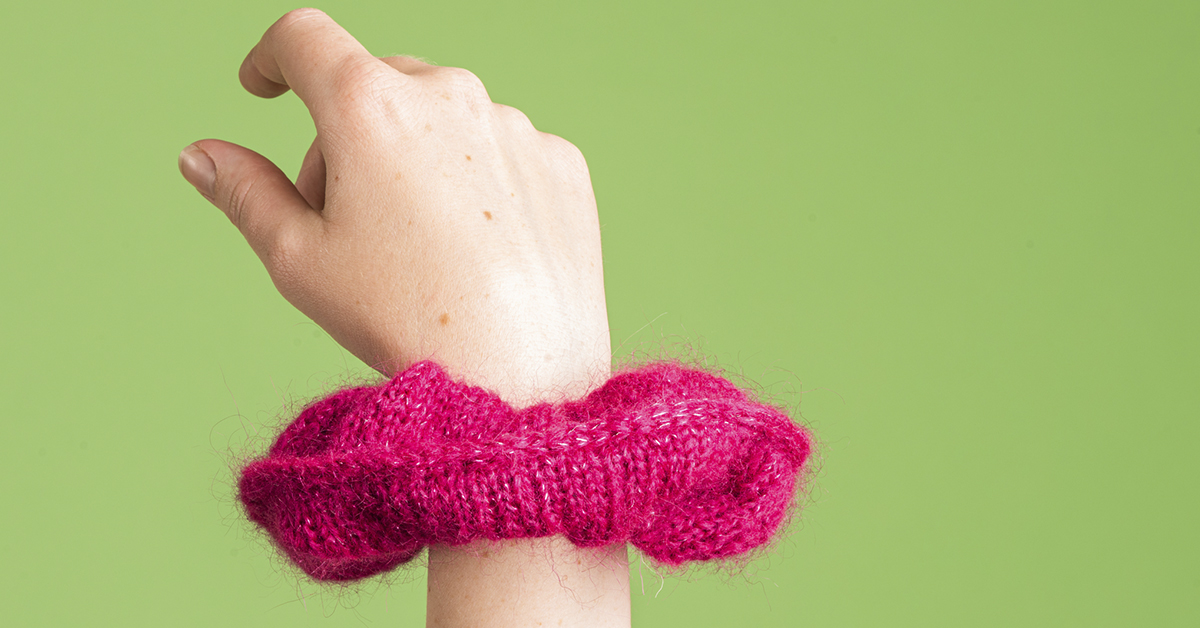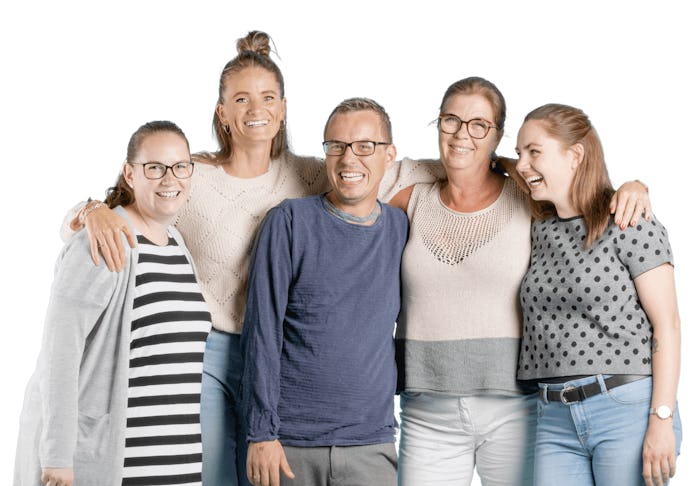The knitting fever is upon us. So far, 2020 has been a year that has given many of us more time on our hands and so a lot of people have chosen to throw themselves into a new hobby, one of them being knitting. But where do you begin and how do you get started? I will do my best to guide you in this blog post.
Get started
When you are completely new to the yarn world, the best place to start on a size 4 mm, 4.5 mm or 5 mm knitting needle. These knitting needles are easy to hold and the stitches are relatively large, so you can see what you are doing. And last but not least - you will progress very quickly, which meansyou can see that something is happening.
Choose the right yarn
Which yarn should you choose when you want to get started? One approach is to use a yarn that is a bit fluffy, possibly together with another strand, as it can help to hide the mistakes you (maybe) will make. However, be aware that it can be difficult to unpick, so it is not the type of yarn that allows you to watch TV while knitting.
Another thing to be aware of is the color of the yarn. Yes, black goes with anything, but it's just a lot easier to see the stitches if you knit with light yarn. Also, dark yarn does not get any easier to work with when the winter months roll around and it gets dark pretty early.
Some of the gorgeous beginner-friendly yarns I will recommend are Twister Solid (possibly doubled) and Cotton Merino Classic, both of which are great summer yarns. However, if you would rather start with some projects for the winter, then Fluffy Day and Snowstorm are just the thing.

Choose the right knitting needles
You probably remember the long knitting needles from school, or maybe you got a pair handed to you when Grannie wanted to show you how to knit. They are called Straight Knitting Needles and there is nothing wrong with them as such. But I would at all times recommend skipping them and going straight to circular needles instead, but don't worry! The name circular needles is a bit misleading - you can easily knit back and forth on them as well ;) You will however be spared from having a lot of weight hanging off of one end of the needle as you start and finish your rows, because the project will always be resting in your lap in front of you.
The material of the knitting needles also has an effect on your knitting. For example, when working with very smooth yarns such as Tencel and bamboo yarn, it may be better to knit on wooden or plastic needles rather than on metal needles. While acrylic, which does not glide nearly as easily, will be ideal for knitting on metal needles as they are quite slippery. The important thing is that you do not switch between needles of different materials when knitting on a project. The different materials can affect your gauge and therefore they play a role in the shape of your finished garment.
I personally adore knitting on these wonderful Symphony circular needles from Knitpro. They have a comfortable grip and the yarn glides well on them – and it certainly doesn't hurt that they look super cute.
Have the right equipment
Good tools are half the work, as they say, and it is exactly the same in knitting. Any beginner kit should therefore always include a measuring tape, a good needle, a small pair of scissors for yarn ends and stitch markers - lots of stitch markers! Stitch markers are your best friend because they keep track of when to increace or decrease, when the repeat begins and where it ends, where the round starts and how many times you have increased. It is also a good idea to have more than one type of stitch markers. I have some that are completely round that keep track of when I need to increase for my raglan, as well as some that can be opened so I can see how many increases I have made so far. One last tip regarding stitch markers is that they are good to have in several colors. Then you can have a color that marks the beginning of the round, one that shows where to make your raglan and finally a color that keeps track of where your repeat begins and ends - it's very clever.
If you get bitten by the knitting bug and decide to invest in a set of interchangeable circular needles, then it is also useful to have a needle gauge with you. The size mark usually wears off pretty quickly and then a needle gauge is nice to have. This way you are sure that you are working on the right size needles.

Do you always have to do make a swatch?
If we're back on the topic of swatching, let me make a sales pitch for the swatch.
No, not all things need a swatch. If you are going to make something like a shawl or a blanket where the size does not have to be spot on, then a swatch is not strictly necessary. But it can still be a good idea to make one, especially if you haven't worked with that particular yarn before.
Your gauge determines not only the size of your finished project, but also how much yarn you will use. If you have chosen to tackle a project with a lacy pattern, you may find that the pattern looks notably different if you do not match the correct gauge.
SUGGESTED READING: Why you should never skip the gauge swatch before starting a new knitting project
Youtube is your friend
A really good place to start if you've gotten hooked and want to learn to knit is YouTube. Here you can learn everything - from beginner techniques such as casting on and knits and purls to more advanced techniques such as Magic Loop and German Short Rows.
Here at Hobbii we of course have our own channel where we regularly upload new videos, but YouTube is a wonder land of instructional videos where all you need to do is search for all the techniques that you need. If you are curious about the Hobbii channel, then you can find it here.
Beginner-friendly projects
When I told my knitting group that I was writing this blog post and asked if they had any good beginner tricks for knitters, my friend said something I thought was very clever - namely, that it is important to start with a project you want to complete.
Therefore, I thought I would give my suggestions on some easy beginner projects
Dishcloths
The classic beginner project is definitely the dishcloth. Here you can train your ability to match the gauge and be introduced to new techniques without it having to turn out absolutely perfect - and who doesn't always need another dishcloth?
We have three easy patterns on our website:
Diagonal knitted dishcloth in garter st
Knitted dishcloth in rib pattern
Party Scrunchie
The party scrunchie is an easy project that is also super trendy. And with the pretty glitter thread peeking out here and there, you are always ready to party.

Vivi Vest
Get on the bandwagon and knit a lovely vest on large needles. Vivi is easy to knit and on an 8 mm needle you will finish quickly - and then you can move on to one of the other wonderful beginner-friendly patterns ;)
It is important that you start with a project that you want to complete.
Gitte Sweater
If you are more into classic sweaters, then I would suggest the Gitte Sweater. Once you get a handle on knitting and purling then you will be charging ahead with this lovely moss pattern. The sweater is knitted with three strands on an 8 mm needle and the beautiful Kid Silk helps to give it a beautiful and luxurious look while hiding some of the beginner mistakes.
I hope this blog post has given you the courage to grab the knitting needles and throw yourself into your first knitting project - we love sharing our yarn universe with others <3
Love
Eva from Hobbii



Leave a comment